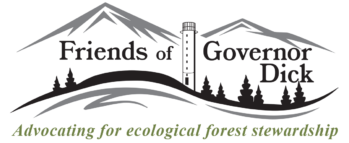I am sharing my experience of acquiring a “Conservation Easement” granted by The Lebanon Valley Conservancy (LVC) and what it means to our family and community.
As a child, my Uncle Phares sparked my interest in nature through hiking, fishing, bird watching, observing wildlife, and understanding of the natural environment. The land protected in the easement, located in Mount Gretna, had been the home of my Uncle Phares and Aunt Joan for 62 years. The property is 85% forest with mature trees having good diversity (oaks, hickory, tulip poplar, beech, birch, walnut, some pine, and hemlock) and has wetlands, a low area where the Conewago Stream head waters originate, and seven springs feed the stream. The north property line runs approx. one mile (east to west) along Rails to Trails.The south boundary runs along Rt. 117 adjacent to Governor Dick property. The east boundary is approx. 800 ft and runs along Butler Road on the north end.
Open wetlands exist where a 3-acre lake was for 92 years. Also, on the property was the site of Kauffman Park (1926 -1929), an amusement park that has been hidden by 90 years of tree growth. Thirteen acres of the property was placed under a Bog Turtle Easement in 2014. My Aunt Joan owned the property until January 2022, and I act as her Power of Attorney since she is in a nursing home. My uncle was a true steward of the land promoting the concept of becoming an Old Growth Forest. He tracked 250 box turtles on their habitat, range, and age. His data is housed at the Lebanon Valley College.
When I was preparing to sell the land, the deed fell short of protecting the land from being developed or timbered as was my family and my desire. Being an LVC Board of Directors member for several years, and past president, I asked the Conservancy to evaluate the property for a Conservation Easement on short notice. The process consists of two evaluations of the land with the first evaluation being a county records check of the property, including all documents of record and survey. However, that process revealed that the 1950 survey did not close the east property lines. We decided it would be best to do a new survey to ensure there would not be any problems. We were lucky to find a surveyor that could start the following week. The second evaluation is a “Conservation Easement Baseline Document.” This document is prepared by a team of knowledgeable LVC members and expert volunteers with narrative and photos of the flora and fauna, invasive species, soils, and general features of the proposed easement. This report showed the property to be a very important and valuable Easement to pursue. The Easement was executed in October 2021 taking six weeks from start to finish.
The property was bought, January 2022, by a New York City Architect specializing in sustainability, Shawn and Rosemary Watts; they are very excited that the property is conserved and will be great stewards of the land.
Most important is what the Conservation Easement means to our local environment, community, and family—as this land is now protected in perpetuity to remain undeveloped as a natural resource to provide habitat, natural waterway for Conewago Creek, and maturing forest. With the recent increasing loss of Lebanon County forests and agricultural land to development, the easement represents an ideal way to promote the conservation and preservation of historical and natural resources of our region for the benefit of present and future generations. I have received many Thank Yous from the community. They are relieved that this land will not negatively impact the community and ensure that part of our natural environment is maintained.
To read more about the Gibble Conservation Easement, view article in LEBTOWN Online.
by Ned Gibble, Mount Gretna Resident

